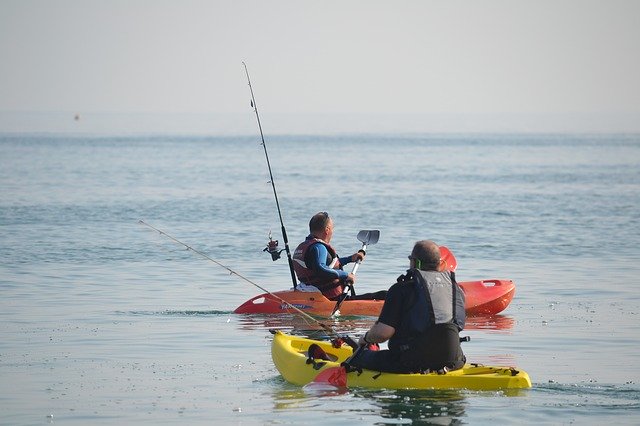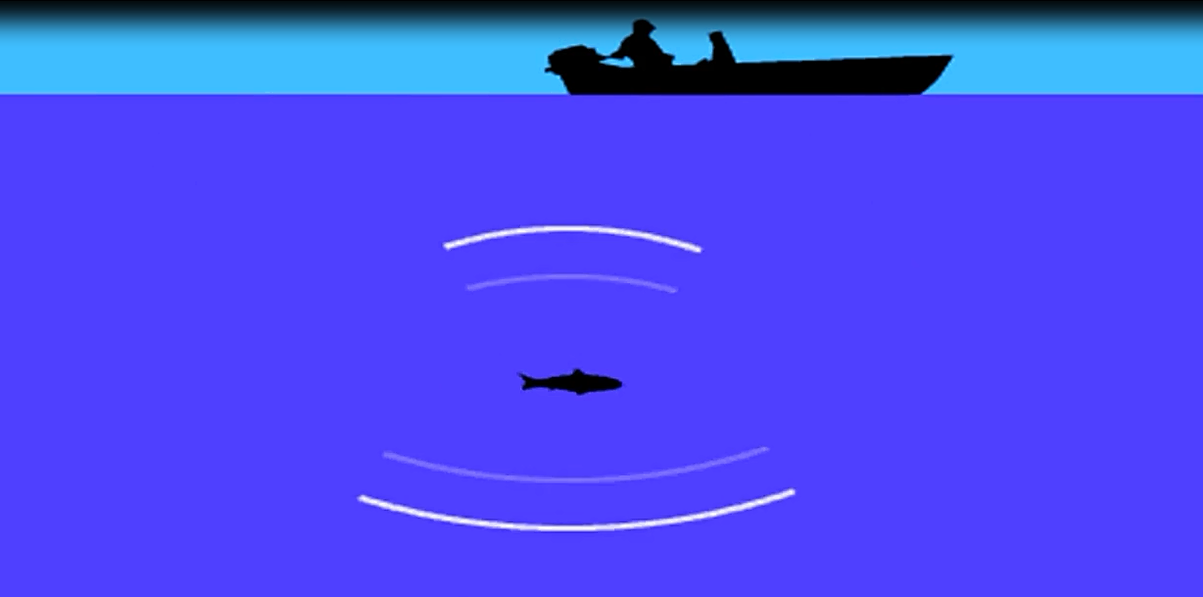Last updated on August 20th, 2022
Who doesn’t love spending a few hours out on the water? It’s relaxing and thrilling. So for good reason, kayaking is a popular form of outdoor activity.
But what about fishing from a kayak?
Well, getting into a kayak offers maneuverability to get closer to the pristine fishing areas. Thanks to the convenient size of the fishing kayak and the quiet nature of it. As a result, you have better access to get to the school of biting fish.
That said, learning how to fish from a kayak is not as easy as it sounds.
For instance, you might struggle to balance the kayak while catching fish. You might be a bit confused about how to dress properly or how to cast your lure from a kayak and so on.
That’s alright though.
You are only in the initial learning curve on Kayak fishing. It will get easier once you know the effective kayak fishing tips and then put in the effort.
And, to help you out today we aim at discussing this and will show you the way you should take it.
Kayak Fishing Tips
First and foremost let’s break down the article into three sections.
- Kayak Fishing Pre Trip Checklist
- Kayak Fishing Packing List
- Kayak Fishing Skills
Kayak Fishing Pre Trip Checklist
Kayaking fishing can prove to be a daunting task if you do not consider and take a few factors into account before you go for the fishing adventure.
So, be alerted to:
a) check the weather forecast report so that you are not exposed to elements, strong wind, lose track into fog or, face dangerous thunderstorm
b) ensure whether it is prohibited to catch fish in the particular lake or river you are aiming at. It will be frustrating if you have to unload your fishing kayak after you set the line
c) study the fishing area, the surrounding, the body of water (tide, water current, etc.) and its origin(i.e., saltwater or freshwater?) to decide on a suitable location. This is very important as you don’t want to miss the peak fishing hours in that particular location.
Visiting the local fishing website, online forums, or simply getting an app are few of the most effective ways to look into the above information.
d) research on the different fish species that are present in your intended reservoir and extant your chances. Learn about their habit and life cycle. This will help you understand when their population is thriving.
e) know the right track to get out of the lake or river and find a safe launch around your fishing destination. This can prove to be invaluable in the event of an emergency when the only thing you will need is to know how to escape this and where to safely rest your kayak.
f) choose the right kind of kayak to suit your water. For example, if you go fishing in a lake with steady water a regular fishing kayak should be fine. On the other hand, a robust kayak is needed if you want to catch fish on big area like rivers or oceans.
g) the design and features of your kayak fishing boat. Technology has come a long way and nowadays you will find kayaks designed to deliver the enormous potential for fishing obsession.
So, what are the features to look out for?
Find a fishing kayak that offers elevated sit position (for increased vision), dry hatch storage, deck storage, rod holders, paddle holder, and retractable pedal power propeller. We recommend Old Town’s Topwater series to keep you on the winning side.
h) pick a suitable paddle that is light and easy to use. This is as important as choosing your kayak. Grab a proper length (not too long not too short) so that you are comfortable reaching and pulling the water. The starting place for an average paddler(between 5’6” to 6’2” height) is between 230cm to 240cm (approximately 8′).
i) determine the optimal length of your fishing rod. You should keep the length of the fishing rod in and around the length of your fishing line. This ensures that you can easily reel the line and avoid losing the fish as you hook one.
Kayak Fishing Packing Tips
When packing for a kayak fishing trip protecting your safety should be the primary concern. However, we are not going to leave it there. So, let’s have a brief look at all the things that you should consider to carry on your kayak fishing trip.
Dressing
The way you dress should be an indication of the existing weather condition.
Therefore, you should wear lightweight clothing, put on hats and pack water-proof sunscreen if you’re going to be exposed in the summer sun. Whereas if you take on winter fishing, wearing a wet-suit coupled with a shell jacket will keep you warm and cozy.
Safety Gears
A freak current can meet your kayak anytime and might topple it to place your life in danger. Scenes like this can happen in the middle of your fishing trip even if you are not expecting it. So, maintain precaution and equip yourself with first aid kit, a life jacket, a whistle, flares, gloves, paddle leash, fishing rod leash, and emergency kayak repair kit to withstand negative situations.
Food and Water
Kayak fishing will not always bring you a bunch of fish especially when they aren’t biting. Lack of food and safe water can ruin your day in such a case. So, always include some dry foods and safe water in your packing list. Also, try drinking plenty of water the day before your trip to avoid dehydration.
Kayak Fishing Anchor
This is an important gear to include in the list not only when fishing on a shallow lake, but also when balancing your kayak on the lake. So instead of paddling back and forth what you can do is to drop the anchor against the current and stabilize your position again.
Please also note, always keep the anchor to the bow or stem and never tether your anchor to the sideways because it can cause your kayak to overturn.
Fish Handling Tools
Even if you are a skilled fisherman you know unhooking and handling the fish is a skill in itself. And, without fish handling tools it can get stressful. So to ease on your catch have pliers (for pulling the hook out of the fish), line cutter, and nets (for scooping up the fish) as a bare minimum. Being a novice consider crimping the barbs on the hooks to make it even easier on the unhooking part.
Remember to get them in one place because you don’t want to try to look for them while fighting the fish
Kayak Fishing Skills
So far we’ve talked about everything that should be considered before you get your kayak on the lake or river. Now is the time we face real things and rightfully so we need to master kayak fishing skills.
Re-Entering Your Kayak
The first technique in the book is to know how to re-enter your kayak from the water. It is easier to re-enter with a friend to help stabilize your kayak. So, start by grabbing on the side of the kayak and let your legs float behind you. Then lift your chest on the kayak with the power of kicking legs and pushing your arms to keep the center gravity as low as possible. Finally, turn around and settle into the seat.
One Hand Paddling
It comes in handy in situations when you’re trying to keep a line in the water and deal with the current or the wind at the same time.
At first, find a leverage point for the forward stroke and use your upper chest and neck as you lean forward. For the Forward stroke on the other side use your elbow and forearm as leverage with a quick flip of the paddle.
Now use your torso for the backward stroke as a leverage point and use the same forearm and elbow to reach across to get more like a sweep on the water. Practice a few times in a steady lake first to find a rhythm before put it to the test in a big area.
Casting From A Kayak
Casting from a kayak on the lake or reiver can be a bit awkward if you are a beginner when you see it starts to wobble around. That said, you can believe your kayak because it is designed to maintain its balance in two forms called the initial and secondary stability.
So, when you see your kayak is flipping the tips is to loosen up your lower body and stay calm. As you get comfortable with this cast your line hitting a high arc getting your lure softly in the water.
Landing Your Fish
Firstly, make sure to use a line about your rod length. And, once your line sizzles reel into your chest lifting the point of the rod about exactly noon
until you have an arm span to the fish. Keep the tension on the line and draw the rod across your body. Now use a leverage net to scoop the fish. And, you are good to go again.
So, that’s it for now today.
The last thing you should remember is that kayak fishing is a lifelong pursuit and is not something you learn just reading a blog post. The key kayak fishing tips for me is to do a lot of practice and get hands-on experience to nail this beautiful skill.
The rest is to find a friend and give it a go.
Happy Kayaking!
[amazon bestseller=”fishing kit” items=”5″ template=”table”]Related Articles





